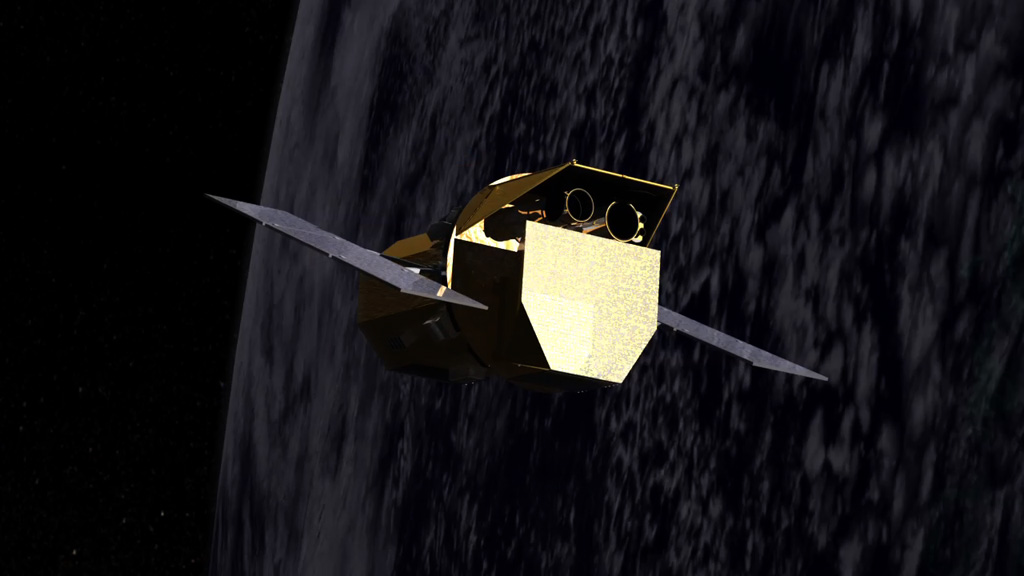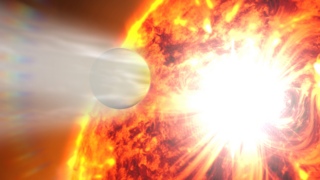Planets and Moons
ID: 11686

Planet HD 189733b orbits a star about 63 light-years away. The world is a gas giant similar to Jupiter, but about 14 percent larger and more massive. In 2010, researchers using NASA’s Hubble Space Telescope watched HD 189733b as it moved in front of its host star. Sixteen months later they looked again, but this time something was different—at least 1,000 tons of gas were leaving the planet's atmosphere every second. The question was: Why? Just hours earlier, NASA’s Swift satellite saw the planet's star unleash a powerful eruption known as a stellar flare. Because the planet is so big and orbits its star in close proximity, the blast had an outsized effect, sending streams of atoms racing away from its atmosphere at speeds greater than 300,000 mph. Watch the video to learn more.



Eroding Exoplanet




Related Story
For More Information
Story Credits
Visualizers/Animators:
Michael Lentz (USRA)
Scott Wiessinger (USRA)
Video Editor:
Scott Wiessinger (USRA)
Narrator:
Erin McKinley (OSU)
Producer:
Scott Wiessinger (USRA)
Lead Writer:
Francis Reddy (Syneren Technologies)
Michael Lentz (USRA)
Scott Wiessinger (USRA)
Video Editor:
Scott Wiessinger (USRA)
Narrator:
Erin McKinley (OSU)
Producer:
Scott Wiessinger (USRA)
Lead Writer:
Francis Reddy (Syneren Technologies)
Please give credit for this item to:
NASA's Goddard Space Flight Center
NASA's Goddard Space Flight Center
Short URL to share this page:
https://svs.gsfc.nasa.gov/11686
Keywords:
SVS >> Astrophysics
SVS >> App
NASA Science >> Planets and Moons
https://svs.gsfc.nasa.gov/11686
Keywords:
SVS >> Astrophysics
SVS >> App
NASA Science >> Planets and Moons








